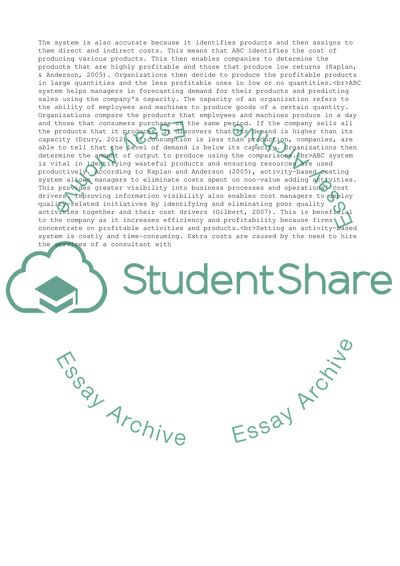Cite this document
(“[Management Accounting] Discuss the strengths and weaknesses of Essay”, n.d.)
[Management Accounting] Discuss the strengths and weaknesses of Essay. Retrieved from https://studentshare.org/management/1634132-management-accounting-discuss-the-strengths-and-weaknesses-of-activity-based-costing-vs-volume-based-costing-system
[Management Accounting] Discuss the strengths and weaknesses of Essay. Retrieved from https://studentshare.org/management/1634132-management-accounting-discuss-the-strengths-and-weaknesses-of-activity-based-costing-vs-volume-based-costing-system
([Management Accounting] Discuss the Strengths and Weaknesses of Essay)
[Management Accounting] Discuss the Strengths and Weaknesses of Essay. https://studentshare.org/management/1634132-management-accounting-discuss-the-strengths-and-weaknesses-of-activity-based-costing-vs-volume-based-costing-system.
[Management Accounting] Discuss the Strengths and Weaknesses of Essay. https://studentshare.org/management/1634132-management-accounting-discuss-the-strengths-and-weaknesses-of-activity-based-costing-vs-volume-based-costing-system.
“[Management Accounting] Discuss the Strengths and Weaknesses of Essay”, n.d. https://studentshare.org/management/1634132-management-accounting-discuss-the-strengths-and-weaknesses-of-activity-based-costing-vs-volume-based-costing-system.


